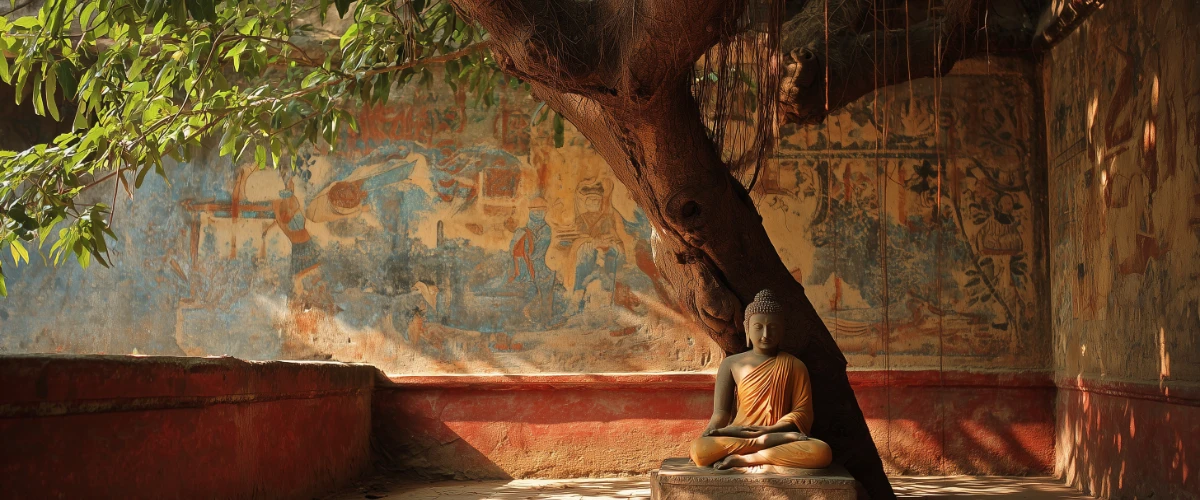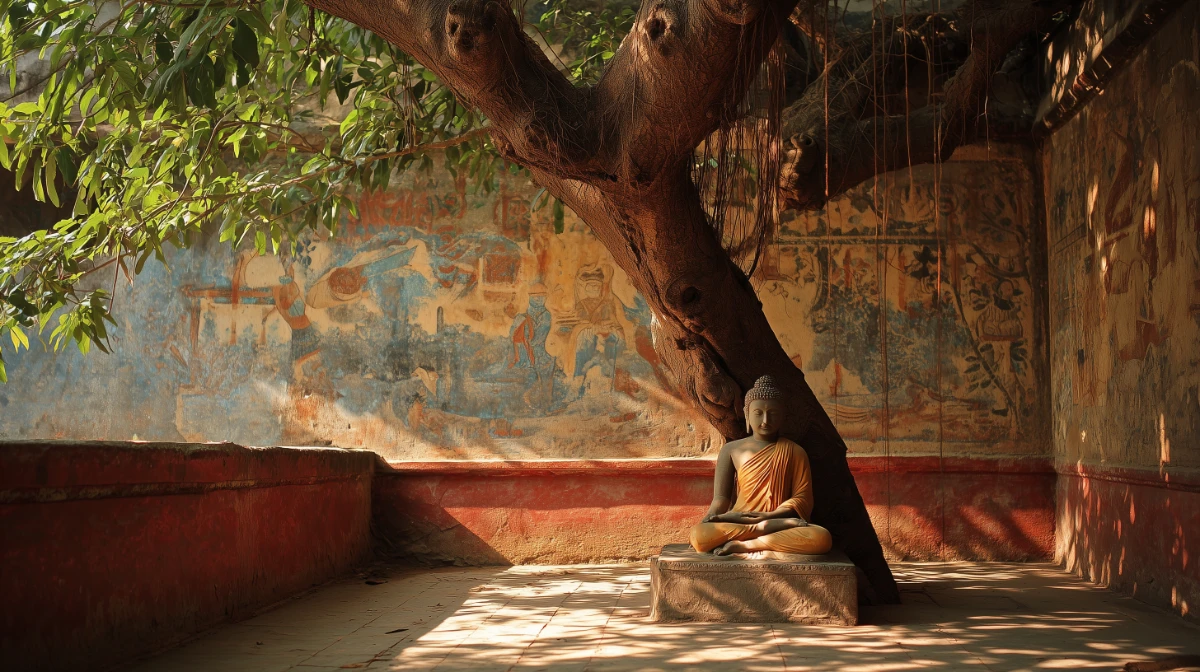
The Four Noble Truths
See rightly. Understand reality. It is changing, impermanent. All is suffering, because everything resists and clings to selfish desire.
Think rightly. Cultivate pure intentions. Renounce. Cherish kindness and compassion. Hatred and violence are in vain.
Speak rightly. Do not lie or slander. Refrain from gossip or rambling. Use words that are true and useful.
Act rightly. Do not kill or steal, do not misuse sexuality.
Live rightly. Earn your living ethically, do no harm to others. Take only what you need. Share.
Strive rightly. Stay vigilant, do not weaken, care for your body, and remain awake to reality.
Be rightly aware. Be fully conscious of your body, your sensations, your mind, and your mental formations.
Concentrate rightly. Seek the firm ground within, meditate until you reach clarity and wisdom.
This is, in my own interpretation, the Noble Eightfold Path taught by the Buddha. That is what I take away from reading the Dhammapada, translated by Eknath Easwaran. Stephen Ruppenthal comments on each chapter.
According to Easwaran, if one had to retain only one text from the entire Buddhist tradition, it would be this small book written in simple language by the Buddha’s early disciples (or the Buddha himself—no one really knows).
From the commentary and some online research, I understand that, having attained deep Understanding—nirvana—the Buddha was moved to teach, rather than retreat into blissful silence. He was a bearer of the middle way. Though the path remains tortuous, and nirvana nearly impossible to attain (many are called, few are chosen), this great mystic was optimistic.
We all vaguely know the story of the Buddha’s life. Born into a royal family, every effort was made to shield the young prince from the miserable reality of his people. Priests had predicted that Siddhartha Gautama would become either a great king or a great mystic.
Around the age of 29, curious about a world he had never known, Siddhartha ventured outside the palace. On each of his outings, he discovered the reality of life: first, an older man, then a sick one, a corpse, and finally an ascetic. The shock was existential. The prince realized he knew nothing of reality. He soon renounced his wealth, left his wife, cut his hair, and set off in search of a guide.
Six years followed—more or less fruitful—during which Siddhartha encountered the extremes of rigid asceticism. Finally, around the age of 35, seated beneath a tree, after deep meditation, he overcame Māra (the passions) and realized the Four Noble Truths and the end of saṃsāra. He became the Buddha.
The Buddha taught for nearly 45 years before passing peacefully—once again under a tree—at the age of 80.
What are the four truths discovered by this sage?
All existence leads to dissatisfaction: birth, aging, illness, death; as well as not getting what one wants, or losing what one loves.
This suffering stems from craving—from the thirst to cling, to exist, or not to exist.
When craving ceases, suffering ends: this is a state of inner peace and freedom.
There exists a path, the Eightfold Path, to understand this: right view, right intention, right speech, right action, right livelihood, right effort, right mindfulness, right concentration.
We are in ancient, millennia-old India. The concept of reincarnation is deeply rooted in people’s minds. Attaining nirvana cannot happen in a single lifetime; it takes several returns to complete the arduous ascent toward fulfillment.
Nevertheless, although rooted in that tradition, the Buddha’s teaching belongs to what is known as the Perennial Wisdom.
“Truth is one; the sages call it by many names. It is present in all authentic religions. It teaches that man is capable of direct knowledge of Divine Reality, and that the purpose of human life is to attain this knowledge.”
— Aldous Huxley, The Perennial Philosophy, 1945
This philosophy could be summarized as follows:
There exists a unique reality, both immanent and transcendent. It is called God, Brahman, Tao, the Void, the Ultimate Real—every tradition speaks of a source beyond the phenomenal world, non-dual, ineffable, yet knowable through direct experience.
The human being possesses a divine dimension — this is the idea of the soul, the ātman, the Self — that inner spark that shares in divine reality. Humans are not separate from the Absolute; they have simply forgotten or obscured it.
The purpose of human life is inner transformation — what traditions call awakening, salvation, enlightenment, liberation is a process of returning to the Source, of purification, of transcending the ego, of rediscovering unity.
There exists a spiritual path, a discipline of the soul — ethical living, contemplation, meditation, and selfless love.
As with the Upanishads, one reads the Dhammapada while sensing both its ancient tone and its contemporary relevance. What was written thousands of years ago still feels just as pertinent and necessary.
One may remain skeptical of the notion of reincarnation, but it seems unreasonable to ignore the Great Questioning.
Even science seems to be circling back toward a mysterious essential, without abandoning what has now been established. The Buddha may not have calculated the existence of black holes, but perhaps he felt them. This remains a mystery only mystics might reveal… or might choose not to—for understanding such realities likely transcends language.
All is mind, as the Upanishads teach, which may explain why journeys through LSD or mushrooms have had such a profound influence on those who took them. The light of our senses may blind us, while reality hides behind a thin pane of translucent glass. Would it be enough to lean in to taste the manna of Eternity?
It is not surprising that the gentle tone of Siddhartha Gautama’s teaching has inspired so many. Of course, not everything is rosy in the world of Buddhism. Since it is only men and women who received his teaching, his words have led to as many joys as sorrows, as many humble gestures as extravagant atrocities. Immaturity is the fate of those who wear the robe, the armour, or the crown of power. We have seen this in all philosophical, mystical, and religious traditions.
Still, that takes nothing away from the truth of the Word.
As for me, I keep reading. I try to listen, a prisoner of my weaknesses, surrounded by a body that weakens. I do not pretend to be wise. I believe I am still too fearful—and too much a poet. I do not know where I stand on the scale of reincarnations, if such a scale even exists. I am more inclined to believe that reality encompasses more than the tiny bubbles that are human souls. In the depths of the oceans, there are animals made of silica and glass, nearly motionless, fixed to their rocks for millennia, feeding on the sediments of our corpses.
Do they possess a consciousness of their own?
I dare to believe it. My suppositions are my hope.
My reading now turns to the third volume translated by Eknath Easwaran: the Bhagavad Gita.
These readings are easy, for the texts are short, commented on, and almost guided. It is said that to attain wisdom, it is enough to be close to a master. The Buddha, however, nuanced this. The master may be one’s inner work.
So be it—listening to my silence, fixed to my rock, feeding on a few scattered thoughts, left behind by my neurons.
